The world has been no stranger to empires, throughout all its continents. But the Inca Empire, or Tawantinsuyu, as it was known to its locals, was definitely one of the most peculiar. It grew to be a sprawling, well-administered place, despite lacking a writing system. Its armies conquered countless neighbors despite the Inca not working iron. And the empire was kept functioning by a massive system of highways and storehouses that allowed resource transport and distribution, even though neither the wheel nor currency was in use inside its borders.
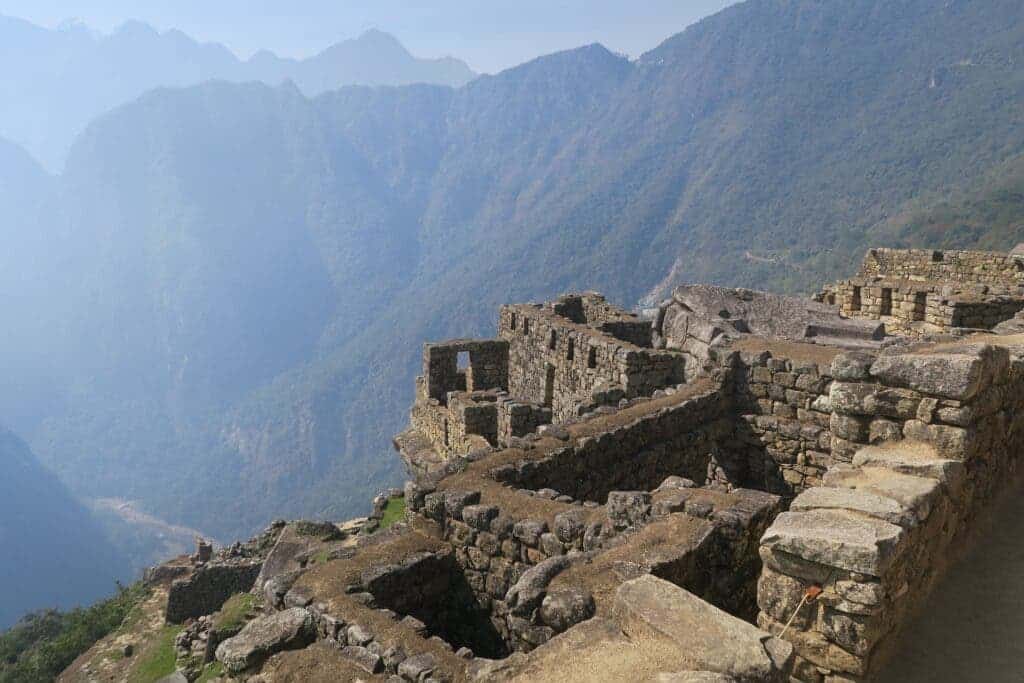
For all its achievements, the Inca empire was relatively short-lived. Still, it left behind a rich heritage that still echoes to this day. The ruins of its cities still awe and inspire, its language is still preserved in South America, its customs are hard-baked into local Christian faiths.
So let’s take a look at this ancient South American powerhouse, and see how people lived in the only ancient empire to develop from north to south, instead of east-west like all the others.
Who were the Inca
South America can boast having the longest continuous mountain range in the world: the Andes. The Inca people were born in the western shadow of this mountain range.
To the best of our knowledge, they first made an appearance in the area around the 12th century A.D. By the 15th century, their empire included today’s Peru, western Ecuador, western and southern Bolivia, northwest Argentina, and parts of today’s Chile. They pretty much-controlled everything west of the Andes in central South America.
We don’t know a lot about the history of the Inca, especially their early history, as they had no system of writing. Knowledge was kept and passed on orally, through stories shared between generations. Much of that (most of it, really) was lost during the collapse of the empire and subsequent Spanish rule. What we do know of them was either recorded by Spanish conquistadores, preserved in fragments of oral history that still survive in some communities to this day, or direct archaeological evidence.
Starting out, the Inca weren’t that different from other peoples living in the area. They were a small tribe inhabiting a single village, tending to crops and the few livestock species native to the area. They grew maize, white and sweet potatoes, squash, quinoa, cocoa, peanuts, peppers, and looked after llamas, alpacas, ducks, and dogs. Cotton was also grown and used for textiles, along with llama and alpaca wool, and cloth would become a keystone of Inca culture throughout their history.
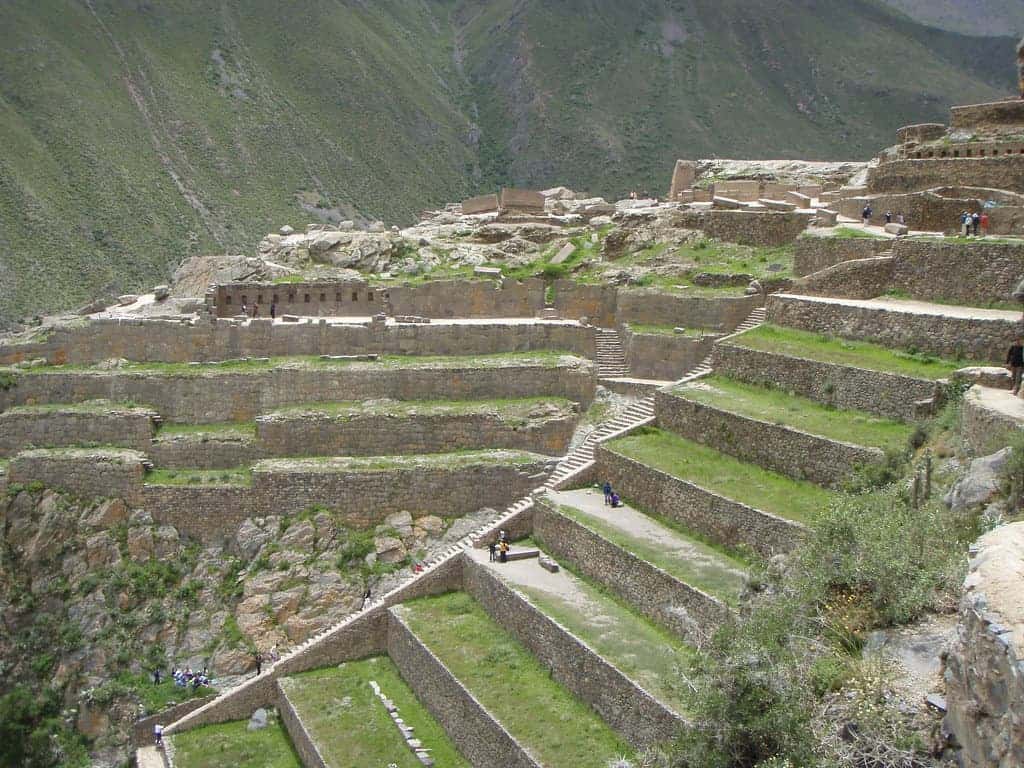
By the end, their empire would include over 12 million people from 100 different ethnic groups. Their expansion might have been expedited by infrastructure left over from previous empires according to Gordon McEwan’s The Incas: New Perspectives, but it remains an impressive achievement nonetheless.
Great stoneworkers and artisans, the Inca developed a building system that used interlocking stones to do away with the need for mortar altogether. Their architecture and public works were impressive even to the Europeans who came to conquer them. Their hydraulic systems (canals, cisterns, terraces, and aqueducts) and their roads (including paved highways and vine-supported bridges) were arguably more advanced and better quality than those in Europe at the time. Testament to their knowledge and skill is the fact that they managed not only to survive but to thrive in some of the steepest mountain landscapes in the world, where traditional farming is a fool’s errand.
They didn’t know how to work iron, but they were accomplished craftsmen. The wealth of gold in their temples and palaces impressed even the conquistadors. Their cities, too, were cleaner and seemed like nicer places to live in than most of those in Europe; although given the state of European cities at the time, the bar wasn’t set very high at all. Machu Picchu, one of the Incas’ most famous surviving archeological sites, is a great example of how their cities would have looked, their architectural style, layout, and overall Incan craftsmanship.
Still, the story of the Incas as we know it today revolves around the Spanish conquistadors. Their arrival in the 16th century directly led to the collapse of the empire, and caused massive cultural, ethnic, and social change after the fall. Local populations were displaced from their ancient lands and used as farmers and miners by the conquerors. The massive loss of life during this time, together with the changes brought about by the Spaniards, caused much of the Inca’s knowledge, history, culture, and religion to be lost to time. Our direct records of the Incas were written by these conquistadors.
Beliefs

Similar to virtually every ancient culture, Incan religion touched on every facet of their lives. Their beliefs were a mixture of nature worship, fetishism, animism — these two mean they assigned spiritual power or essence to animate or inanimate objects, places, or phenomena — with sacrifices and elaborate rituals thrown in for good measure.
There was an official religion of the empire, but other religions and practices were tolerated as long as proper worship was given to the main god. So the customs of the peoples the Inca assimilated over time remained alive. We can still see traces of these customs mixed into local interpretations of Christianity to this day.
According to Inca mythology, the world was created by Viracocha, who made the earth, animals, and humans. Viracocha seems to have created, destroyed, and recreated either individual peoples or humanity as a whole several times. After fashioning them from stone one last time, he spread humans to the four corners of the Earth. This tidbit offers us an interesting glimpse into how the Inca perceived the world and their place in it. The name they gave their empire, “Tawantinsuyu”, roughly means “the four corners together” — symbolically, the world existed wherever there were Inca, and Inca spread as far as the world did. But it also hints at their desire for harmony and unity.
Far from being an absent god, however, Viracocha walked among men. He journeyed throughout the region, teaching people valuable skills, until finally setting out into the Pacific. Later, as the Inca capital Cuzco was being besieged, Viracocha is said to have appeared in a vision to their leader, Pachacuti Inca Yupanqui, presumably to guide them to victory. Afterward, a temple was raised in honor of Viracocha at Cuzco, which would later amaze the conquistadors with the sheer quantity of gold it contained — Qorikancha, the Enclosure of Gold.
“The religious complex of Coricancha (Qorikancha) in the Inca capital at Cuzco contained the Temple of the Sun which was not only the most sacred site or huaca in the Inca religion but was considered the very center of the Inca world,” explains Worldhistory. “The site was also known as the Golden Enclosure and was dedicated to the highest gods in the Inca pantheon.”
“Little remains today except some sections of its fine stone walls which hint at the site’s once massive size and the legendary stories which tell of the enormous quantity of gold used to decorate the temples and its golden garden.”
While Viracocha was the original creator god, the Inca themselves believed they were the sons of another deity entirely — Inti, the sun god. They believed Inti sent his son, Manco Capac, to Earth, where he killed his brothers and settled with his sisters in a valley near Cuzco sometime in 1200 A.D. The Incas believed that they were his lineage.
Inti, as the sun god, was the official deity of the empire, the one their religion revolved around. This isn’t very surprising given their ‘familial tie’ to the deity, nor unusual for civilizations at this developmental stage. Virtually every animist religion in history had its own flavor of sun god, as people intuitively understood that all life flowed from our star. Inti took the Moon, Mama-Kilya, as a wife.
Other important deities were Apu Illapu, a god that resided between the stars at night, from where he drew rain over the Earth; Pachamama, the Earth, and Cochamama, the sea. Still, it’s a bit unclear whether these last two were gods in the sense we understand the term today, more akin to personifications, or simply their words for ‘Earth’ and ‘sea’, which they also used symbolically. Several stars and constellations also seem to have played the role of minor deities or important spirits and would be called upon for different purposes.
Both men and women tended to the gods. Priests and their attendants took care of fetishes (the spiritual kind, not the ones you find online today) and various rituals, while Chosen Women, who lived in the temples under a vow of chastity, prepared ritual food, kept sacred fires, and weaved ritual garments. In general, as far as we know, temples weren’t really public spaces; ceremonies were conducted outside of their grounds, with all the faithful. We’re not completely certain that this is the case, however, as the sheer size of some ruined Inca temple complexes we’ve found make it hard to believe that they were completely forbidden to the public.
One temple complex which speaks of the way that Inca worshiped at is Vilcashuamán. For the Inca, this was an important administrative and religious center, Willka Waman (“Scared Hawk”). One of the altar buildings here — terraced pyramid-like structures known as ‘ushnu’ — is comprised of four platforms stacked over one another, with 36 stone steps leading to the top. Here sits an impressive double throne carved from a single block of stone for the ruling couple. Several other ritual and religious buildings litter the site.
Today, people live in Vilcashuamán pretty much exactly where the Inca did, with not one fence or archeologist’s rope separating the two. Some of the ushnus have been restored — a Catholic cathedral towers over the ruins of another. But even in their diminished state, these ruins show just how seriously the Inca took religion and ritual.
“Vilcashuamán is now a small village, remote on its hill-top, perched on the ruins of the great Inca city whose temples have been pillaged for building blocks” SAExpeditions quotes anthropologist and academic John Hemming.
Technology, economy, organization
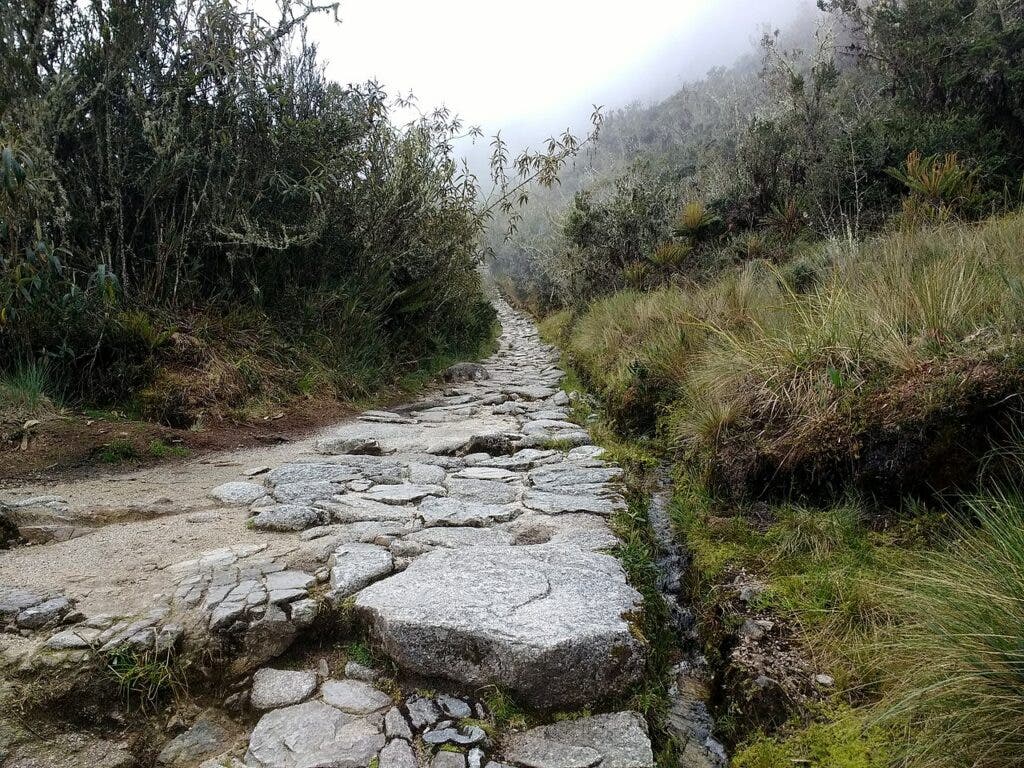
Perhaps one of the most striking of Inca achievements were their roads and public works. Their Qhapaq Ñan — “royal road” — network was the longest and most developed road network on the continent during its time.
The network was built around two main backbones, highways stretching from the north to the south, parallel to the Andes. One of these was closer to the sea, while the other was higher up in the mountains. Multiple branching roads connected these to population centers or other important sites. For their time, these roads were very advanced and sophisticated. Infrastructure such as retaining walls or drainage ditches ensured its stability. The roads were often paved with stone and had steps incorporated to help navigate steep areas. Bridges, usually vine-supported, allowed the Inca to navigate the arduous terrain.
We estimate that this network included around 40,000 kilometers (25,000 mi) of roads, parts of which are still around to this day and see use as tourist routes. As we’ve mentioned before, it’s possible that part or all of this network was inherited from previous kingdoms and empires in the area. So in the strictest sense of the word, they may not be an example of Inca technology and wealth (as it cost a fortune in resources and labor to build such roads).
But what I personally find most astonishing about the Inca roads was the infrastructure built around them. Infrastructure meant to turn a loose string of communities into an empire — an empire without pack animals, or wheels.

The Inca didn’t know of, or chose not to use, the wheel. They also settled in a part of the world that has few native animals which lend themselves well to domestication. They had llamas and alpacas, which you can shear or eat, but do not make good pack animals. These aren’t grave concerns if you’re content to be a farmer in some peaceful mountain village. For an empire, however, lack of a simple mode of transportation can quickly become a catastrophic issue. Goods and people need to flow for economies to survive, and communities to flourish. Armies and messengers — the blood and sinew of empires — absolutely need to be able to move around quickly, or locals might get strange ideas like ‘independence’, ‘self-rule’, and ‘what if we stopped paying taxes?’.
So the Inca did the best thing they could: they carried the weight of empire on their own backs.
The roads were dotted at regular intervals with buildings to facilitate their use. Short-distance stops acted as relay stations for Inca runners (‘chasquis’), who acted as messengers. Alongside these, ‘tambos’ were spread apart roughly at the distance one could walk in one day, and acted similarly to inns in Europe, giving travelers (be they workers or soldiers) and their animals a place to rest safely. In newly-conquered areas or on the empire’s borders, forts called pukaras looked over the roads.
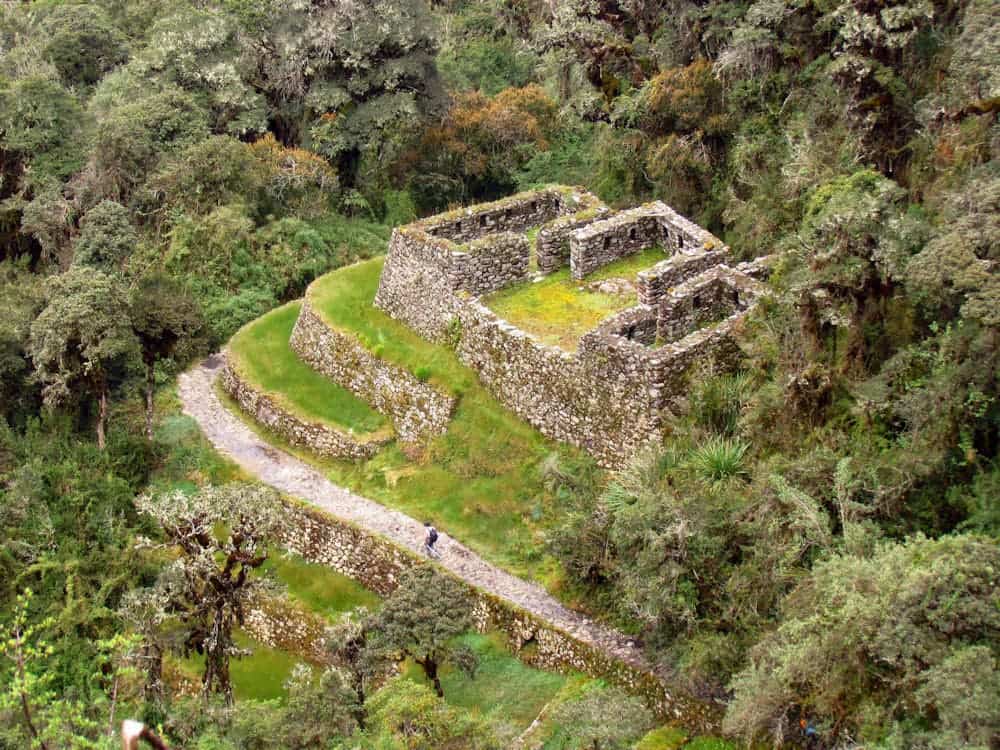
The final bit of infrastructure one would see along the roads are, in my opinion, part of the most fascinating systems the Inca had in place, although on the face of it, they sound incredibly dull: administrative centers and state warehouses. And if there was one thing the Inca went full-out with, it was administering warehouses. These were the Qullqa.
Qullqa were placed in population areas (both for practicality and to show off to the plebeians, which never hurts) and along the road network, where they would support the activity of messengers and workers, and, most importantly, armies on the march. According to The Distribution and Contents of Inca State Storehouses in the Xauxa Region of Peru (D’Altroy, Hastoft, 2017):
“A centrally planned storage system played a pivotal role in the management of Inca staple finance. By staple finance, we mean the direct or indirect rendering of the state of measured amounts of key agricultural or craft goods, which were later used to pay for services rendered to the central authorities. Such goods were amassed at Cuzco and at provincial centers to support permanent personnel, to finance ceremonies, to fund labor projects, and to underwrite state security and political relations. The quantities of goods stored amazed the Spanish, who drew extensively from state warehouses for years. The generally reliable chronicler Cieza reported that, at the imperial posts along the road network, ‘once the lord was lodged in his housing and his soldiers nearby, nothing, from the smallest to the greatest, was left to be provided’.”
“The principal functions of centrally managed stockpiling in the Inca economy can be seen in (1) the regular maintenance of [permanent personnel] and the temporary support of corvee (the system of paying tax in labor) laborers; (2) provision for a buffer against fluctuations in state needs caused by both anticipated and unpredictable environmental, economic, and political changes; and (3) provision of a subsistence safeguard for local populations in the event of shortages.”
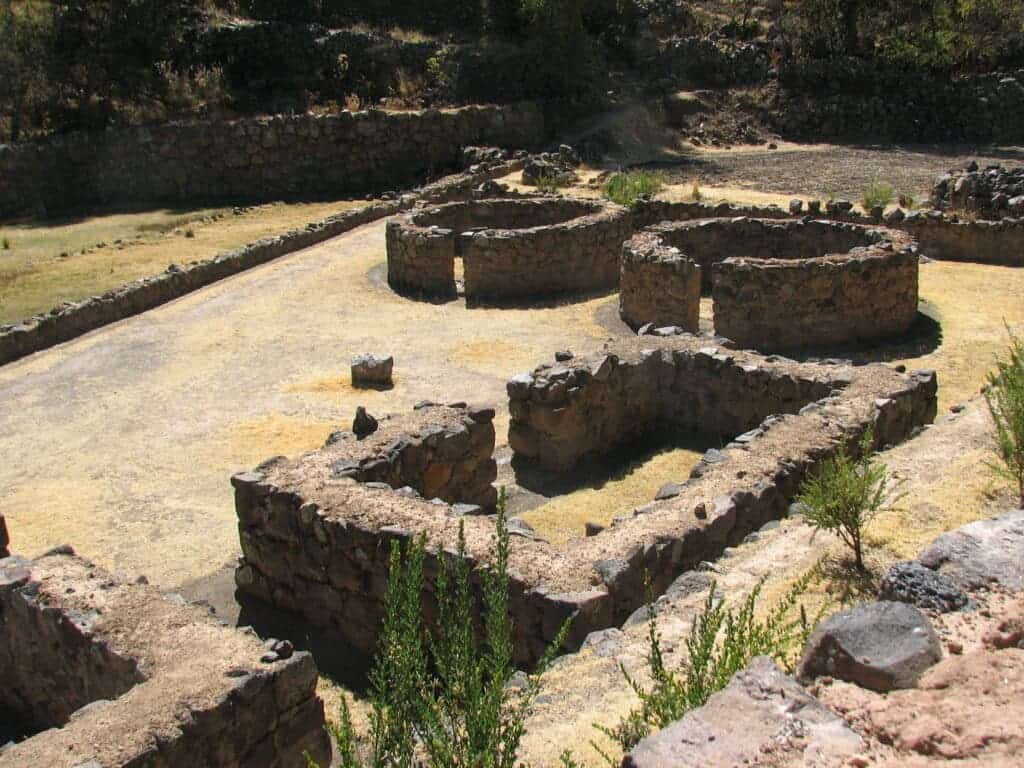
The Inca didn’t use coins. More to the point, they didn’t use money as we understand it at all. They probably bartered among themselves day-to-day, they were people after all. But, as a state, they were completely currency free. The way their system functioned was that individuals would pay their taxes in work by serving in the army, working in agriculture, or on public works. The empire would pay them back in kind — in the sense that it would provide its citizens with virtually anything they needed to perform their job, or to survive tough times — and through an agreement that festivals would be organized for the people at certain times of the year.
It might not sound like a reliable system at all, but it obviously worked for the Inca. Pedro Sánchez de la Hoz, the first Spanish chronicler to visit Cuzco, wrote of “storehouses full of blankets, wool, weapons, metals, and clothes and of everything that is grown and made in this realm”. Among other things, he recounts “a [ware]house in which are kept more than 100,000 dried birds, for from their feathers articles of clothing are made”. Yet other locations held “shields, beams for supporting house roofs, knives, and other tools; sandals and armor for the people of war in such quantity that it is not possible to comprehend”.
All of this, all over the empire, was produced and transported on the backs of people. The overwhelming majority of Inca were farmers, essentially, working to produce their food, clothing, and whatever other crafted goods they would need. They would pay their taxes in work, for which the state provided all the tools and resources necessary out of the storehouses. This work would, in turn, produce the items that the state distributed, ensuring further work could be carried out, and the safety and provision of the general population in hard times. It also ensured that there were enough laborers around to build and maintain the roads, terraces, and temples that kept the empire alive.
In essence, this created a redistributive wealth system (most modern economies operate under a transactional wealth system). The Incas called their corvee system mit’a, and every male aged 15 to around 50 or so was required to partake. While it definitely has a hint of oppressiveness to it, the mit’a system seems to have worked very well for the Inca. So much so that the average Incan family would only need to work their farms for an estimated 65 to 70 days a year to ensure their food supply. The rest of the time they devoted to the mit’a, as the state storehouses provided whatever they need. Overseers were tasked with extracting the labor tax, but they were also personally responsible to ensure that every person working the mit’a would have enough time to take care of their own land and family.
The only commoners who were exempt from the mit’a were craftspeople, but these worked directly for the state, so I guess the outcome was the same.
While the Inca didn’t use writing as we understand it today, they did develop an ingenious system of knotted strings that allowed them to keep track of their empire. These ‘khipu’ likely worked much like an abacus, although as with all things Incan, we can’t be too sure. Deciphering the reading of khipu has long been the holy grail of archeologists studying the empire, as it could give us access to a treasure trove of Inca knowledge that is currently beyond our grasp.
Fall from on high
The Inca empire grew from a simple village to the most powerful state on its continent through war. It also fell through war.
Given this, it might be a bit peculiar that I didn’t go into the history of who they fought, when, and where. Partially it’s because I don’t really have a clue, partially it’s because I was never particularly interested in that part of their history (hence me not having a clue). In my eyes, the way the Inca lived has always outshone the way they conquered. Still, any stories about the Inca must end the same way their empire did: with the Spanish conquistadors.
Like all other pre-Columbian empires, the Inca were strong enough to repel the conquistadors. They were, arguably, capable of withstanding a full-scale invasion from Europeans at the time. But, like all other pre-Columbian empires, they were devastated by the diseases these Europeans unwittingly brought to the Americas, chief among them being smallpox, which claimed as much as 90% of the empire’s subjects. They also had a bit of a civil war going on right before the Spanish invasion, which didn’t help at all.
The conquistadores arrived in South America around 1526. Fighting between the two really started in around 1535, but by now, the Inca were already a shadow of their former selves. Infighting, disease, political intrigue, and a general breakdown of the administrative systems that made them mighty in the first place plagued the empire. Their efforts to push back the Spanish from the lands they occupied were repeatedly beaten back, and they kept losing more.
The last embers of an independent Inca state survived in a remote mountainous area, Vitcos, in today’s Peru. It, too, would fall by 1572.


